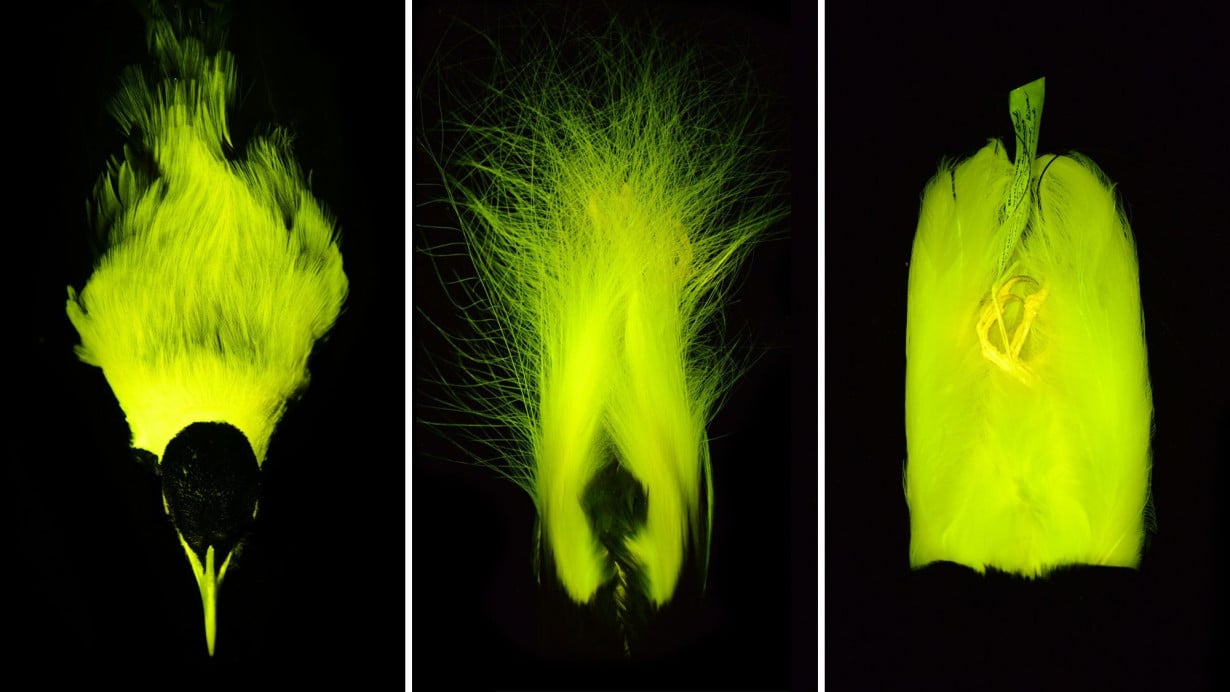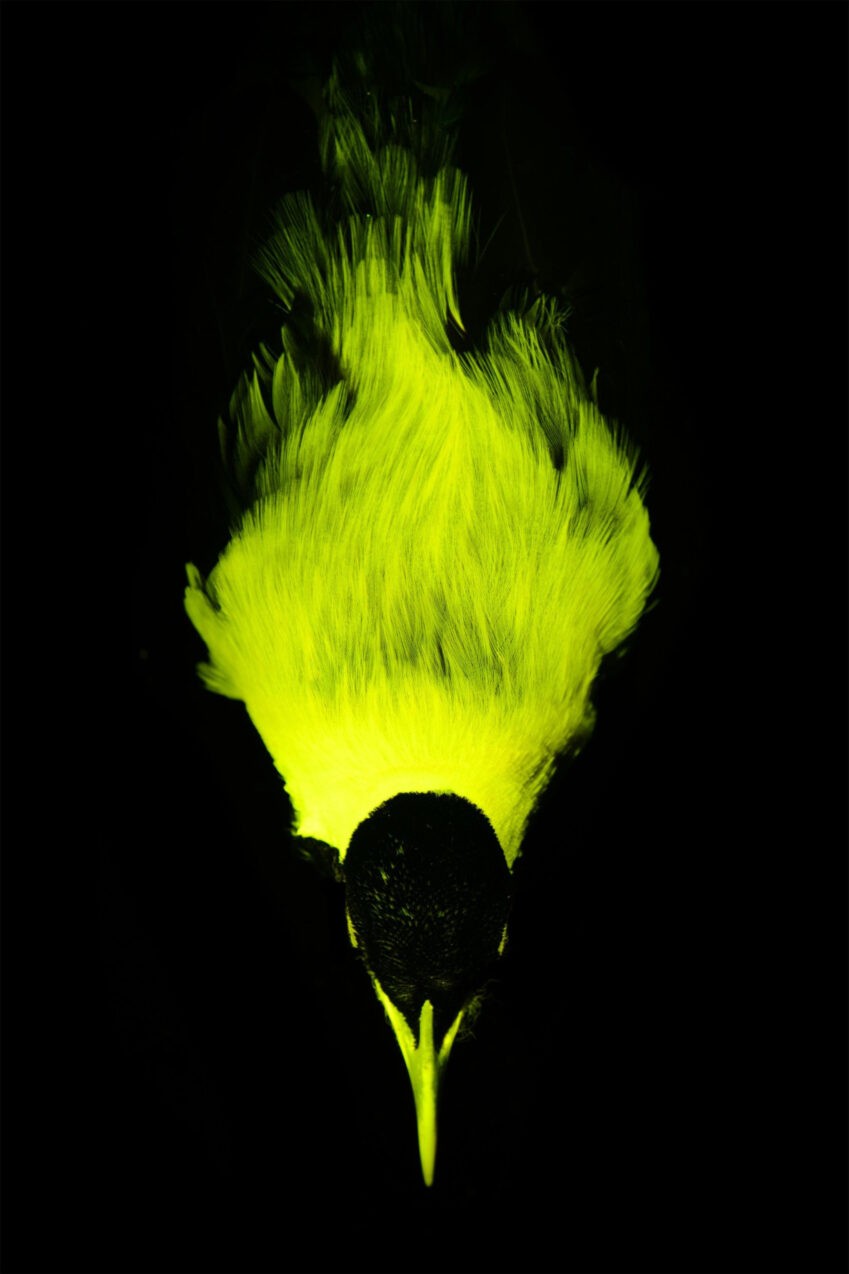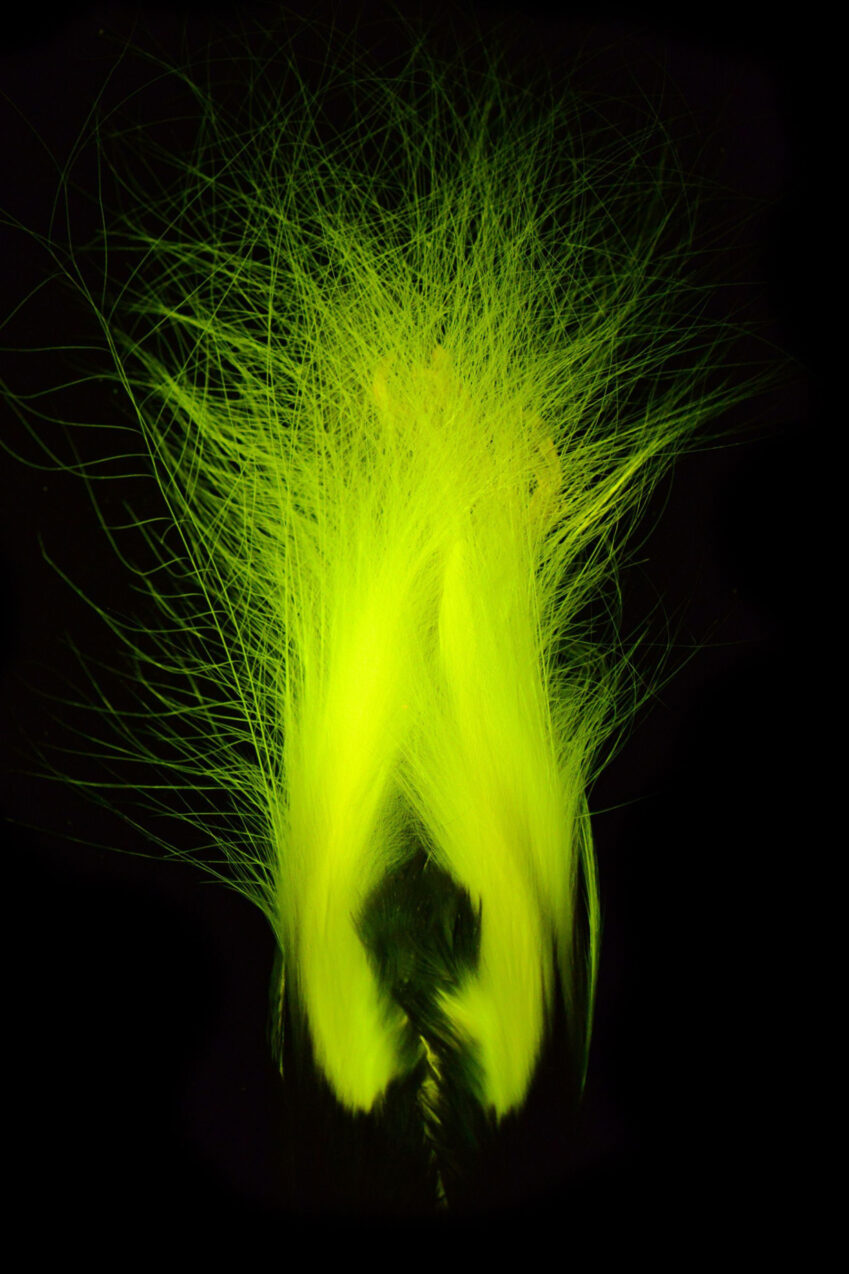(CNN) — Many types of birds — such as hummingbirds, peacocks and parrots — are vividly colorful, but birds-of-paradise are especially flamboyant with hues of emerald, lemon, cobalt and ruby. Now, research has revealed these stunning birds are also sending secret color signals that are invisible to human eyes.
Plumage and body parts of birds-of-paradise glow in certain areas when viewed under blue and ultraviolet, or UV, light, appearing bright green or yellow-green, scientists reported in a new study published February 12 in the journal Royal Society Open Science.
Living organisms produce light in two ways: bioluminescence and biofluorescence. Bioluminescence (the light produced by fireflies, for instance) requires a chemical reaction involving the molecules luciferin and luciferase. Biofluorescent creatures generate their glow with structures that absorb high-energy wavelengths of light, such as UV, violet or blue, then emit the light in a lower-energy wavelength.

Researchers described biofluorescence in 37 of the 45 known species of birds-of-paradise, found only in remote tropical forests and woodland habitats of Papua New Guinea, eastern Indonesia and parts of Australia. Illuminated by blue and UV light, the birds’ white and bright yellow plumage broadcasts colors that may be used in territorial disputes or for finding mates, according to the study.
Birds are known for their exceptional color vision, and many types of birds — among them pigeons, turkeys, ducks and geese — can see in the UV spectrum. Little is known about the vision of birds-of-paradise. However, some closely related lineages, including the Corvus genus (crows and ravens), the Rhipidura genus (fantails), and the Pica genus (a type of magpie) are known to have vision that’s sensitive to wavelengths of violet light. For such birds, fluorescent markings would shine like a beacon in the dark, the study authors wrote.
“The study is well-designed, in terms of looking across the diversity of the birds-of-paradise group as well as at some of their close relatives,” said Dr. Jennifer Lamb, an associate professor of biology at St. Cloud State University in Minnesota. Lamb, who studies biofluorescence in amphibians and reptiles, was not involved in the research.
“What’s really interesting about biofluorescence is that even though it is a visual signal, or it can be a visual signal, it’s still been relatively understudied in a lot of different groups,” Lamb said. “So we’ve kind of overlooked this potential area of visual signaling and visual communication, primarily because it’s not something that our own eyes perceive.”

Fishy fluorescence
Though birds-of-paradise are known for their dramatic colors, the biofluorescent aspect of their visual communication was previously undescribed and raises new questions about how the birds use visual cues, lead study author Dr. Rene Martin said.
“This is just one additional piece to the puzzle,” she told CNN. “And if it can be found in a group that is arguably very well-studied, you can find things like this anywhere.”
More than a decade ago, senior study author Dr. John Sparks, a curator in the department of ichthyology at the American Museum of Natural History, or AMNH, in New York City, identified biofluorescence across numerous fish species. That finding led him to question how widespread this trait was across other animals, said Martin, a fellow fish biologist and an assistant professor at the University of Nebraska–Lincoln.
Sparks could access a vast array of bird specimens at AMNH. A preliminary sweep through the museum’s ornithology collection with a blue light confirmed his suspicions, revealing fluorescent traces in birds-of-paradise, Martin said. But it wasn’t until Martin joined the museum in 2023 as a postdoctoral researcher that the investigation went deeper.
Along with Sparks and study coauthor Emily Carr, a doctoral student at the museum’s Richard Gilder Graduate School, Martin revisited the birds-of-paradise specimens in AMNH’s drawers.
“I basically took high-powered blue flashlights and UV flashlights and went through the collection,” she said. As she searched, she wore special goggles that blocked the blue light and revealed only the illumination produced by fluorescing birds-of-paradise.
The scientists then took those birds into a lightless room where they photographed them and measured light emissions. Depending on the species, fluorescence showed up in different body parts, such as the birds’ bellies, chests, heads and necks. Some species had long, glowing plumes, gleaming bills, or sported glimmering spots inside their mouths.
“Oftentimes the fluorescent areas were bordered by really darkly pigmented feathers, which contrasted against that fluorescence,” Martin said. “A lot of these birds-of-paradise have also evolved something called an ultra-black feather that really sucks in a lot of that light — which is interesting, because the group of birds-of-paradise that aren’t biofluorescent don’t have that ultra-black feather.”
Beginning to see the light
There are more than 11,000 known bird species, but only a handful of groups are known to fluoresce. Other researchers previously described biofluorescence in auks, bustards, owls, nightjars, parrots, penguins and puffins, but little is known about how they use biofluorescent signals, the study authors reported.
“In parrots and in birds-of-paradise, it’s hypothesized to be likely that they’re using it in some sort of communication or reproductive displays,” Martin said.
But in some of the other groups in which biofluorescence has been found, scientists aren’t sure what it’s used for, “or if it’s even used for anything,” Martin added. “It could be something that evolved as a useful protein to be a good structure in a feather, that just happens to biofluoresce.”
Biofluorescence is likely far more widespread than once thought. In recent years, scientists have found biofluorescence in fish, salamanders, sea turtles, and various species of mammals and marsupials.
“Studying biofluorescence is important because it helps us understand how different groups have evolved to communicate,” Lamb said.
“There’s also the potential for it to contribute to our own medical or technological advances,” she added. For example, green fluorescent protein, which was discovered in jellyfish, is today used in medical studies to illuminate stages of embryological development and to reveal the growth of cancers and other types of cells.
“It’s very likely that if (biofluorescence) is popping up all over the tree of life it has very useful implications for the individuals expressing them,” Martin said.
“Whether it’s in birds-of-paradise that might be using it for signaling or it’s another organism that’s using it for camouflage, it’s just an additional thing that organisms are evolving in order to survive and reproduce.”
The-CNN-Wire
™ & © 2025 Cable News Network, Inc., a Warner Bros. Discovery Company. All rights reserved.

 Trump has begun another trade war. Here's a timeline of how we got here
Trump has begun another trade war. Here's a timeline of how we got here
 Canada's leader laments lost friendship with US in town that sheltered stranded Americans after 9/11
Canada's leader laments lost friendship with US in town that sheltered stranded Americans after 9/11
 Chinese EV giant BYD's fourth-quarter profit leaps 73%
Chinese EV giant BYD's fourth-quarter profit leaps 73%
 You're an American in another land? Prepare to talk about the why and how of Trump 2.0
You're an American in another land? Prepare to talk about the why and how of Trump 2.0
 Chalk talk: Star power, top teams and No. 5 seeds headline the women's March Madness Sweet 16
Chalk talk: Star power, top teams and No. 5 seeds headline the women's March Madness Sweet 16
 Purdue returns to Sweet 16 with 76-62 win over McNeese in March Madness
Purdue returns to Sweet 16 with 76-62 win over McNeese in March Madness








